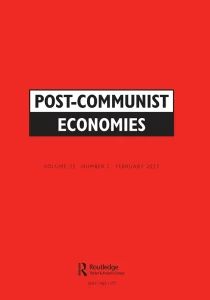Are the determinants of per capita incomes spatially homogeneous?
Tibor Bareith & Adrián Csizmadia
Abstract
This study examines whether the determinants of per capita incomes in Hungary are spatially homogeneous or exhibit significant local variations. Using 2019 municipal-level data, we apply Geographically Weighted Regression (GWR) to model relationships between total domestic income per working-age population and variables like educational, employment indicators, enterprise activity, and proximity to economic centres. Comparing the global OLS model with the local GWR model, we test if these determinants’ effects vary regionally.
Our findings reveal substantial spatial non-stationarity: the GWR model outperforms the OLS model, indicating that factors such as education levels and job seeker proportions impact incomes differently across regions. Specifically, educational attainment and the proportion of job seekers significantly influence incomes in most municipalities, while individual enterprises and municipal investments are significant only in certain areas. These results suggest that policies to improve incomes in Hungary should be tailored to local conditions rather than adopting a uniform national approach.
Keywords: Geographically Weighted Regression, spatial heterogeneity, Hungary, per capita income, local models



